CSU chemist who developed revolutionary battery mentors next generation of innovators
Story by Allison Sylte Images by Allie RuckmanEven as Colorado State University Professor Amy Prieto continues to commercialize a fast-charging battery that’s being touted as a game-changer for everything from electric vehicles to power tools, she’s continuing to educate the next generation of innovators inside her lab in the Chemistry Building.
“CSU is truly unique in enabling what is called ‘use-inspired research,’” Prieto said. “In our chemistry department, a lot of us might do some pretty fundamental research, but we always have an eye toward trying to solve some sort of practical problem. In our case, it’s renewable energy, and in my lab, I want to think of better ways to produce and store that energy.”
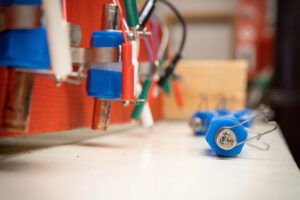
Prieto and her team of 11 Ph.D students and four undergrads are currently working to study how readily available materials like sodium can be used to construct batteries. Since these materials are heavier than their more well-known lithium-ion counterparts, the hope is that these batteries can be used for non-portable applications like storing and using energy from solar cells or wind farms.
“We are looking for solutions to large-scale grid storage – for these applications you don’t care how heavy it is, you want it to be cheap and pretty durable,” Prieto said.
Some of what happens in the Prieto lab can best be compared to cooking new recipes – but unlike the average kitchen, researchers have to manipulate the ingredients inside an airtight plastic compartment while wearing thick plastic gloves. In addition to assembling makeshift batteries and testing them in a variety of different conditions, Prieto’s team also set up chemical reactions to create nanoparticles made up of a variety of abundant elements that could be used to produce energy in the future for applications like solar cells.
“CSU is a national leader in sustainability research,” Prieto said. “As the population increases, so does the need to produce more energy. Our hope is to develop technology to make it more accessible to develop batteries in the U.S. and help alleviate these problems.”
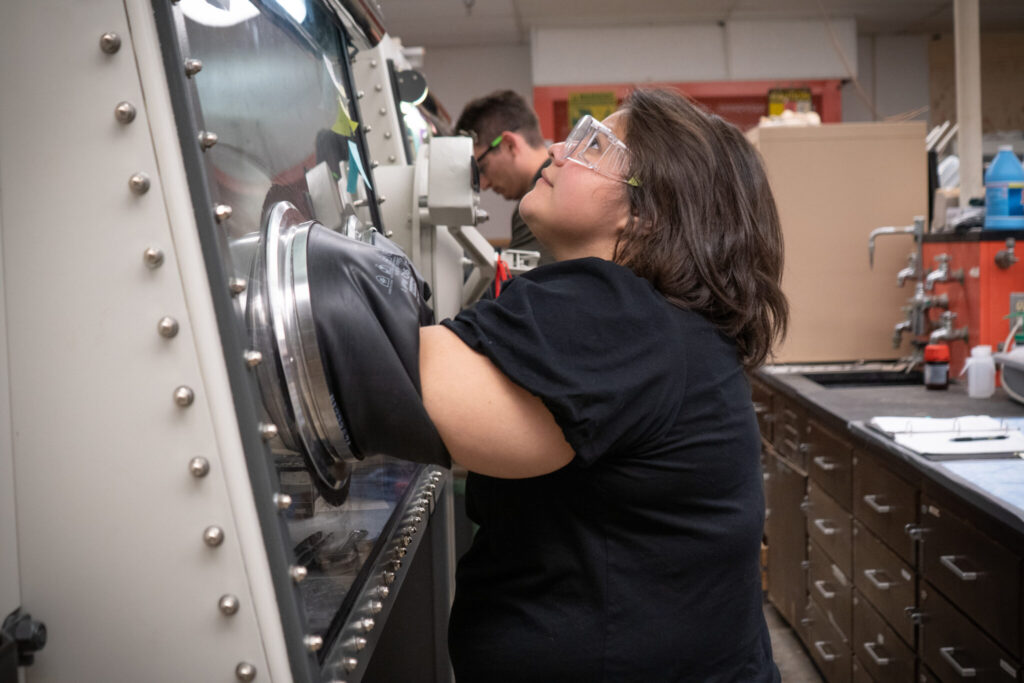
Kelly Nieto, who recently received her Ph.D from CSU, manipulates compounds inside an airtight container in Prieto’s lab.
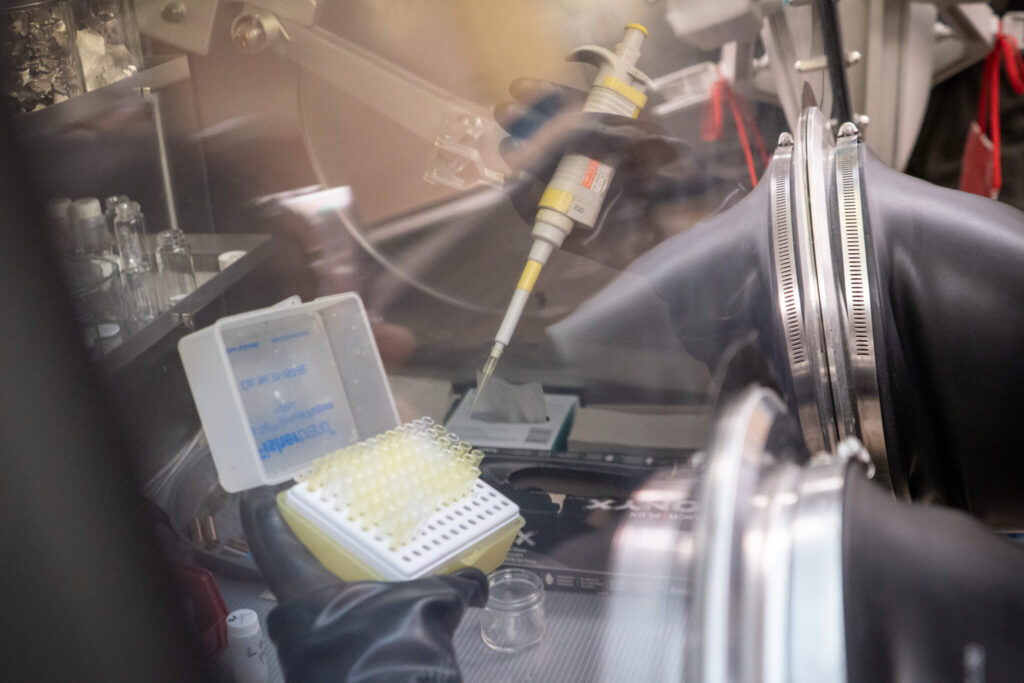
Prieto says to think of some of the work that happens in her lab as similar to cooking, where her team tests different ingredients to see which combinations can create and store the most energy.
A better battery
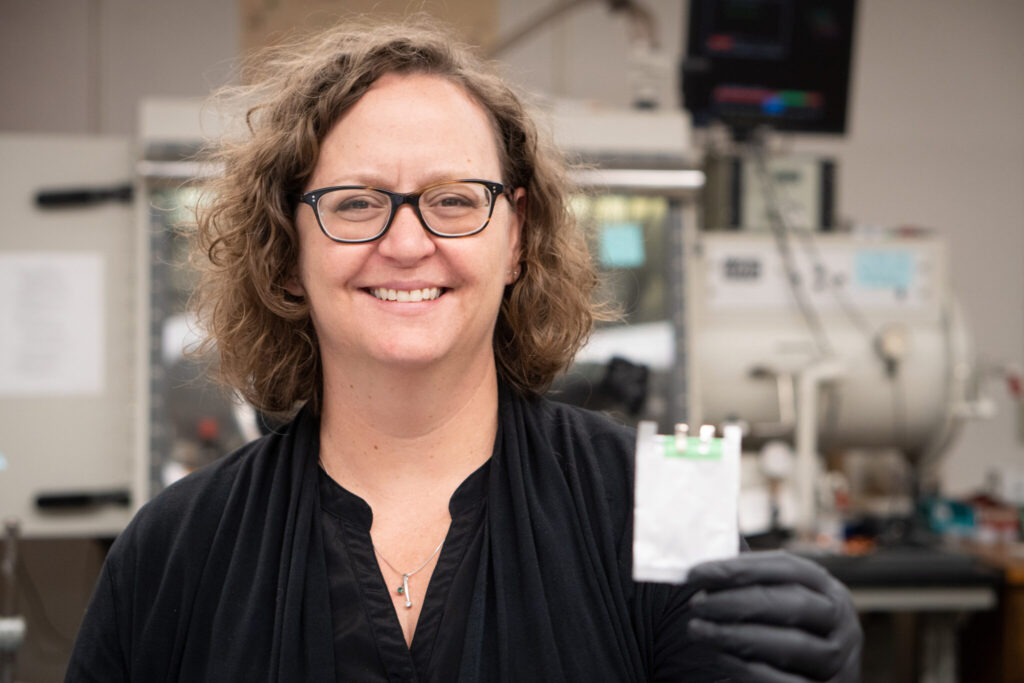
Prieto’s effort to build the next generation of batteries began shortly after she arrived at CSU in 2005 as a solid-state chemist who didn’t necessarily have a background in this type of technology. Good mentors allowed her to realize what was possible, and years ago, she sat down with a group of graduate students and listed what they wanted batteries to be: higher power, higher performance and, perhaps most importantly, relatively cheap to build using sustainable chemistry.
That’s what led her to develop a three-dimensional, solid-state battery that is not flammable or combustible, unlike other batteries on the market, and is also capable of charging in three minutes and operating at a temperature range between -30 and 100 degrees.
“One asset of CSU is how easy it is to explore the entrepreneurship side of research.”
Prieto officially started Prieto Battery Inc. in 2009 with assistance and an intellectual property license from what’s now CSU STRATA, a nonprofit that supports the campuses and affiliates of the CSU System through intellectual property management and technology transfer, among other services.
CSU STRATA currently has a board observer seat and owns shares in the company. Since the initial application that was filed in 2008, Prieto’s patent portfolio includes 28 issued patents in countries around the world.
“One asset of CSU is how easy it is to explore the entrepreneurship side of research,” Prieto said. “I’m grateful for the resources that were available to me to navigate the patent-filing process and to work with CSU STRATA on licensing agreements.”
Stanley Ventures, which represents Stanley Black and Decker, is a major investor in Prieto Battery Inc., and has funded research exploring batteries for power tools and lawn equipment.
All of this is currently happening in Prieto Battery’s facility off Research Boulevard near the CSU campus, and Prieto said the hope is for the company to build its first pilot scale manufacturing facility close to home as well.
Lab serves as pipeline for future leaders
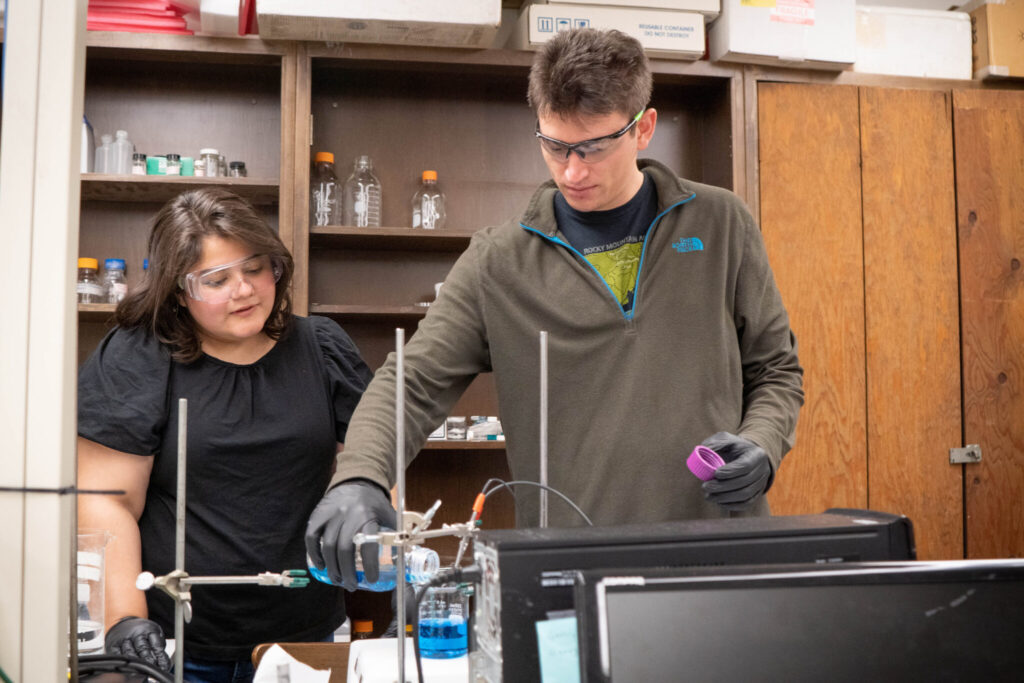
Kelly Nieto (left) and Nathan Neisius (right) collaborate as part of their work in Amy Prieto’s lab.
In addition to being an entrepreneur, Prieto is also a mentor. Ph.D. students who have worked in her lab have later landed jobs everywhere from Redwood Materials in Nevada to the National Renewable Energy Laboratory in Golden.
Kelly Nieto has worked in Prieto’s lab for five years and after successfully earning a Ph.D. in chemistry this spring, landed a job at the Dow Chemical Company – which is among the three largest chemical producers in the world.
“I think the skills I learned in Amy’s lab definitely got me this job,” she said. “Dr. Prieto made me an independent thinker, and no matter what I can do, I can use those skills going forward.”
Nathan Neisius, a fifth year Ph.D. student, said he was drawn to Prieto’s lab because he sees good batteries as a key to all sorts of future technological advancement.
“The energy crisis around the world is evident,” he said. “People like Amy are working to solve these problems, and she loves nothing more than mentoring people along the way.”